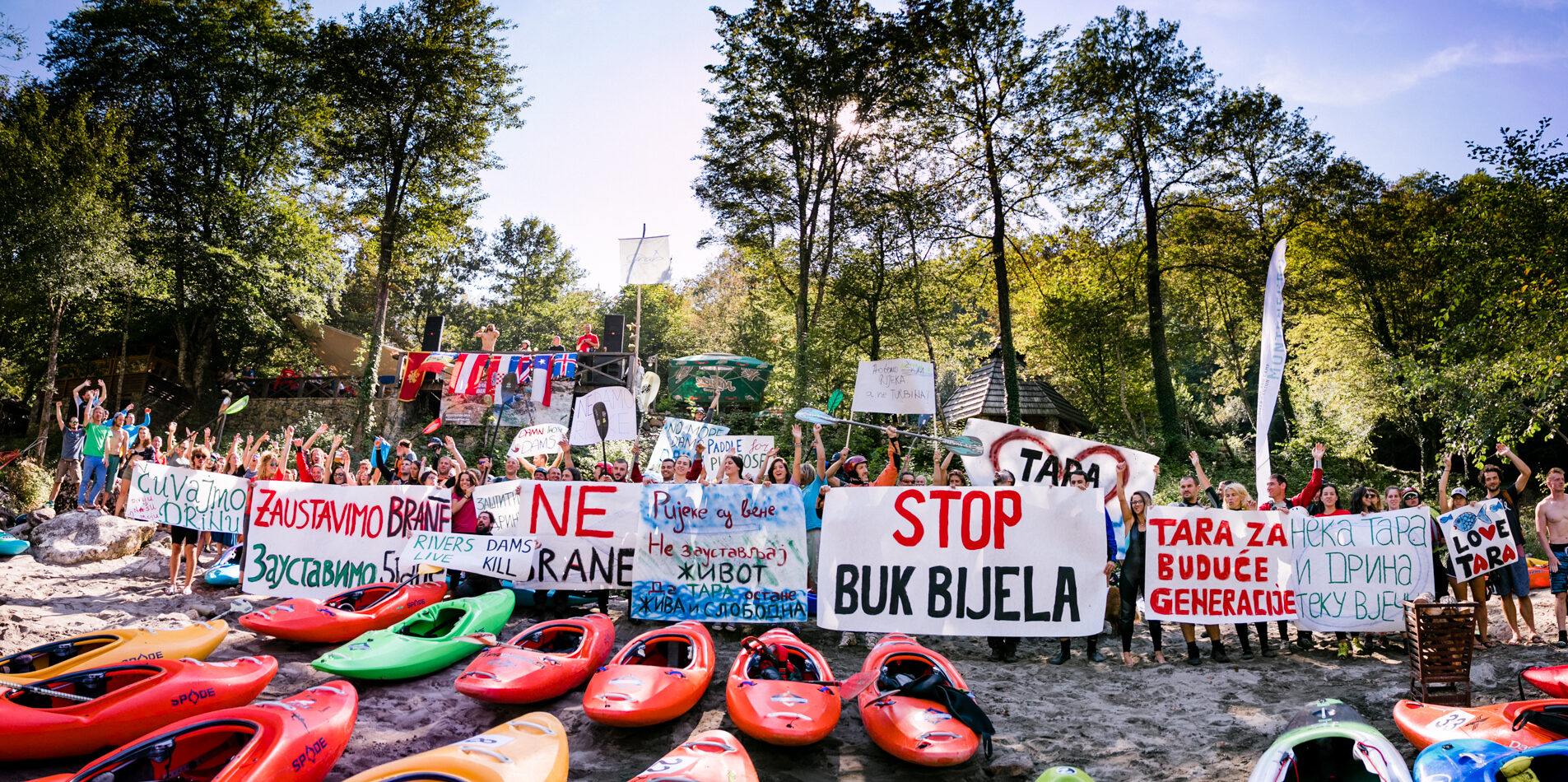Non-governmental organisations from Bosnia and Herzegovina and Montenegro on Friday submitted a complaint to the Espoo Convention on Bosnia and Herzegovina’s failure to carry out a transboundary environmental impact assessment for a series of dams planned near the Montenegrin border.
Pippa Gallop, Southeast Europe energy advisor | 18 May 2020

Photo credit: Katja Jemec, Balkan River Defence
Plans for the Buk Bijela dam on the Upper Drina have been around since at least the 1970s, and attracted opposition even back then. The current version of the project, with a capacity of 93 MW, and a reservoir stretching right up to the Montenegrin border, is planned by Elektroprivreda Republike Srpske (ERS) as part of a series of four plants, along with the Foča (44 MW), Paunci (43 MW) and Sutjeska (44 MW) dams.
But where hydropower developers see wasted electricity potential flowing down the river unused, nature-lovers, scientists, anglers, kayakers, tourists and others see a stunningly beautiful river with clear blue water that together with its tributaries forms the longest remaining habitat of the endangered Danube Salmon – Hucho hucho – with around 553 km of rivers containing around 30 per cent of the total global Danube Salmon population.
And it is precisely the impact on one of the Drina’s main tributaries, the river Tara, that is the subject of a complaint to the Espoo Convention Implementation Committee submitted on Friday by non-governmental organisations Green Home, Ozon, the Center for Environment, and the Aarhus Center Sarajevo.
The UNESCO-protected Tara Canyon – often said to be the deepest gorge in Europe – is one of Montenegro’s most famous landmarks and part of the Durmitor National Park. Reaching a depth of 1300 metres at its deepest point, the canyon starts to widen out as it nears the Bosnia and Herzegovina border. Joining with what is left of the river Piva since it was dammed in the 1970s, it forms the majestic Drina.
The Tara Canyon’s inaccessibility for humans makes it a haven for wildlife, including numerous species of fish. But since it is a relatively high-volume, fast-flowing river, with few accessible tributaries, it has few places where fish can spawn, and they therefore rely on the Drina downstream.
This was one of numerous issues that was ignored or downplayed in a substandard environmental assessment carried out for the Buk Bijela project in 2012. Despite the study authors having done no primary fieldwork to establish what species actually lived at the site, they concluded that the dam would be acceptable for the environment, and concluded, without any evidence, that there would be no impact on Montenegro.
In 2013, ERS’ foreign partner withdrew and the project seemed dormant for some time. But the search for partners continued and in July 2017, a memorandum on construction of the project was signed with China National Aero-Technology International Engineering Corporation (AVIC-ENG).
In 2018 the Republika Srpska Ministry of Spatial Planning, Construction and Ecology illegally extended the project’s environmental permit, despite ERS having missed the deadline for renewal. After a court challenge by the Aarhus Center from Sarajevo, the decision was annulled in May 2019. But in December a new environmental permit was issued with no new environmental impact assessment being done, in spite of Montenegro having stated its interest in participating in a transboundary impact assessment and requesting that a new study be carried out. This decision too is being challenged in court.
The constant renewal of outdated permits based on old and inadequate environmental studies for projects has become a habit across the Western Balkans and needs to stop. It leads to unnecessary damage, often without knowing exactly what is being destroyed, and prevents much-needed debates about whether it is of greater public interest to go ahead with decades-old projects or to look for more contemporary alternatives.
While better legislation is certainly needed, with the EU Water Framework Directive and Nature Directives sorely missing in the Western Balkans, the first step is to implement what is already in place, including the transboundary consultation requirements of the Espoo Convention. We hope that it will not only be left to NGOs to insist on this but that the Montenegrin government will also insist on its right to be consulted – the stakes for the Tara Canyon are too high not to.
Never miss an update
We expose the risks of international public finance and bring critical updates from the ground – straight to your inbox.
Theme: hydropower
Location: Montenegro | Bosnia and Herzegovina
Project: Buk Bijela and Upper Drina cascade
